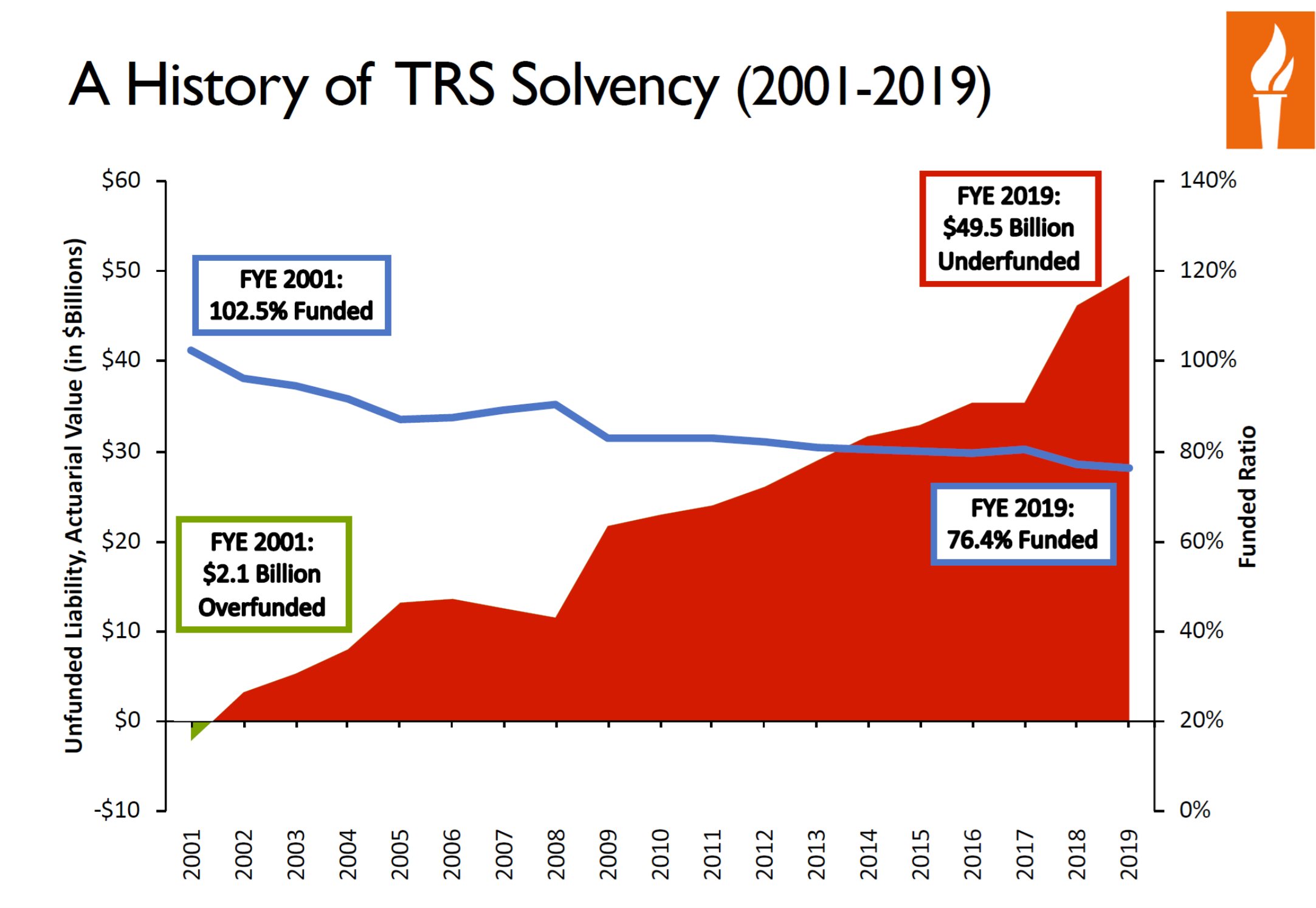Teacher Retirement System of Texas Pension Solvency Analysis
In 2001, the Teacher Retirement System of Texas was $2.1 billion overfunded and on track to provide the retirement benefits that had been promised to the state’s educators. Just 20 years later, the public pension plan has over $49 billion in unfunded pension liabilities and is falling deeper into debt each year in large part due to underperforming investments and structural underfunding of the system.
Our newest analysis of the Teacher Retirement System of Texas (TRS), updated this month (October 2020), shows that the past two decades of underperforming investments, interest on pension debt, and inaccurate actuarial assumptions are taking more and more funding away from Texas classrooms and teachers’ salaries each year.
Reason Foundation’s solvency analysis reveals important findings, such as how overly optimistic investment return assumptions have been the biggest contributor to TRS debt—adding over $30 billion in debt since 2001. It also highlights that interest accrued on TRS debt has added $28 billion to the system’s unfunded liability in the last two decades.
Not only does the latest solvency analysis examine the factors driving the growth of TRS’ unfunded liabilities, but it also presents a stress-test analysis to measure the impacts that future market scenarios could have on unfunded liabilities and required employer contributions.
The findings show that TRS has only a 50 percent chance of meeting its set expected rate of return, and if it does not the system will fall even further behind.
The shocking growth of the pension system’s debt can be seen in the chart below, which is pulled from the full solvency analysis.
With only 76.2 percent of needed assets on hand today, this underfunding not only puts taxpayers on the hook for ballooning debt but also jeopardizes the retirement security of Texas educators.
A new, updated analysis will be added to this page regularly to track TRS’s performance and solvency. The analysis will look at the primary factors driving unfunded liabilities over the past few decades and offer stress testing designed to highlight potentially latent financial risks the plan is facing. The report will also provide a number of policy suggestions that, if implemented, would address the declining solvency of the public pension plan.
Teacher Retirement System of Texas (TRS) Pension Solvency Analysis
The Pension Integrity Project at Reason Foundation offers pro-bono consulting to public officials and other stakeholders to help design and implement policy solutions aimed at improving public pension plan resiliency and promoting retirement security for all public employees. We stand ready to help motivated policymakers and stakeholders understand the issues, and we maintain up-to-date actuarial models for both the Employees Retirement System and the Teacher Retirement System of Texas, which allows us to test the potential actuarial and fiscal impacts of a wide variety of potential policy changes.
Reason Foundation’s previous solvency analysis of the Teacher Retirement System of Texas (TRS) is available below:
Stay in Touch with Our Pension Experts
Reason Foundation’s Pension Integrity Project has helped policymakers in states like Arizona, Colorado, Michigan, and Montana implement substantive pension reforms. Our monthly newsletter highlights the latest actuarial analysis and policy insights from our team.




